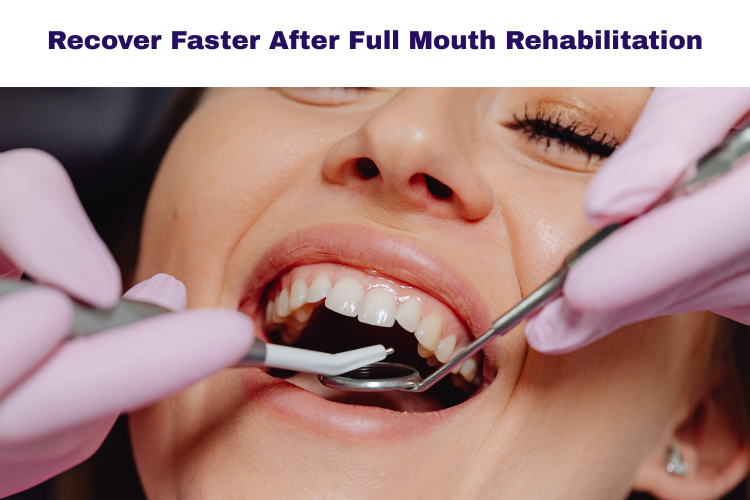Schedule Appointment




Introduction
Restoring your smile’s functionality and appearance through full mouth rehabilitation can change your life. It might, however, have some negative effects, just like any dental procedure. Even though the majority of these are transient and controllable, being prepared can make recovery easier.
One of the most common side effects after complete mouth rehabilitation is discomfort or pain. This can be caused by extensive tooth functions such as transplantation, crown, or gum treatment. The pain is usually temporary and reduced when the mouth is cured.
How to Manage:
Inflammation is a common reaction after large tooth processes. It can affect the gums, cheeks, and even the jaw area.
How to Manage:
Especially after the following periodontal treatment, patients may experience mild bleeding or tenderness in the gums.
How to Manage:
It may take time to adjust dental transplants, crowns, or bridges, which means that temporary difficulties clearly chew or speak.
How to Manage:
Patients who have many processes, such as improving cuttings or transplant positions, may experience the hardness or pain of the jaws.
How to Manage:
Since complete oral rehabilitation often involves large restorations, some patients may feel fewer misunderstandings in their bites in the first place.
How to Manage:
Most of the rehabilitation side effects of full mouth last a few weeks to a few days. However, the complexity of the treatment and response from each patient determines how long it takes to cure. The healing process can be intensified by following the instructions after the dentist’s aftercare.
While mild discomfort and sensitivity are common, it’s worth contacting your dentist if any of the following occur:
1. Is the pain normal after complete mouth rehabilitation?
Yes, mild to moderate pain is normal and can be controlled with painkillers and cold compression.
2. How long does swelling after a complete mouth rehabilitation last?
Inflammation usually lasts for a few days but can be reduced with ice packs and proper comfort.
3. Can I eat normally after a full mouth rehabilitation?
It is best to start with soft food, and gradual infection occurs in regular food because the mouth adapts.
4. Why do the gums bleed after full mouth rehabilitation?
The gums can cause sensitivity and mild bleeding but should improve with mild oral hygiene and rinsing with salt water.
5. What should I do if my bite seems uneven after the treatment?
Changes in smaller bites are common; if the disadvantage persists, contact your dentist for an adjustment.
6. How can I get after a complete rehabilitation of the mouth?
Follow the instructions after treatment, maintain oral hygiene, stay hydrated, and avoid hard foods to help you with improvement.
Complete mouth rehabilitation is a transformation process that can restore oral health and confidence. While some side effects are expected, they can be effectively controlled with proper care. For guidance and care from your dentist, you can enjoy a smooth improvement and long-term results.
Visit your nearest Branch –
Gachibowli Branch
Madhapur Branch
Koti Branch
Puppalaguda Branch